Crape Myrtles - Good/Bad
The Good: Very hardy, one of the few things that survived this last "killing summer".
Come in different sizes from dwarf to privacy hedge size.
Beautiful colors and long blooming.
Very, very long-lived. Have seen some 20 footers over at Sacred Heart Mission ruins in Konawa that are ancient.
Drought tolerant. See them planted in the medians on the interstates.
The Bad: If large, can take up a lot of space in cramped conditions.
Extremely difficult to remove permanently.
Like Bradford Pears, Rose of Sharon and (scale-prone) Euonymos, overused in landscaping.
All in all, if you plant the right size for your area, a very nice plant that is blooming in the heat, when other things are suffering. Obviously, I like it.
Comments (26)
mksmth zone 7a Tulsa Oklahoma
12 years agolast modified: 9 years agoI absolutely love Crepe myrtles. I have a red and pink that when in full bloom can really fill the yard with a wonderful scent. I know they are used in pretty much every landscape but I dont think that is all that bad considering as you mentioned they still keep on blooming even in the 110+ we had this summer.
mike
helenh
12 years agolast modified: 9 years agoI am going to plant more after this year. I was trying for the tree form on some of mine because the bark is beautiful. But last Feb. it was too cold and all my crepe myrtles shot up from the bottom with dead tops. This dry summer they bloomed at about three feet and looked like perennial flowers instead of trees or shrubs. I am going to cut my small ones like Pink Velor low because I like the look I got this year. They a tough and I am discouraged with fragile plants in the terrible weather we have had this year.
Related Professionals
Deer Park Landscape Architects & Landscape Designers · Mountain Brook Landscape Architects & Landscape Designers · Forest City Landscape Architects & Landscape Designers · McKinney Landscape Contractors · Danvers Landscape Contractors · Davis Landscape Contractors · Gainesville Landscape Contractors · Lynchburg Landscape Contractors · New Berlin Landscape Contractors · North Potomac Landscape Contractors · Nutley Landscape Contractors · Red Oak Landscape Contractors · South Hackensack Landscape Contractors · East Norriton Landscape Contractors · Lebanon Decks, Patios & Outdoor EnclosuresPallida
Original Author12 years agolast modified: 9 years agoI just don't think you can go wrong by adding these beautiful, hardy shrubs to your landscape. Sharing something I know for a fact. I worked at a nursery supplier in Eastern OK several years ago that supplied plants to WM, Home Depot and Lowe's. These plants come out of the same fields, so the difference in prices in the stores is up to the retailer. If you watch carefully, WM will probably be the cheapest for the same plants. Of course, if you are wanting something "special", you will have to shop the pricier nurseries...............
Jeanie
susanlynne48
12 years agolast modified: 9 years agoUgh......don't get me started on how much I hate Crepe Myrtles!
Susan
soonergrandmom
12 years agolast modified: 9 years agoThey seem to take a licking and keep on ticking in the heat, but not so much in the cold. After the cold of last winter, I noticed many that came back from the roots, but needed to have the previous years dead wood cut out of them. Some people didn't do that and had some really weird looking trees.
I don't know if I am allergic to them or to something else that begins blooming at the same time, but I know when they are blooming before I even see one. I don't think they are as heavily used in this area of NE Oklahoma as they were in the more southern parts of the State. That may have to do with the extra maintenance required to cut out the dead parts after every extra cold winter.
One of my neighbors has them in her front yard and I appreciate their beautiful blooms from a distance, through my kitchen window, but I don't need to plant one.
Pallida
Original Author12 years agolast modified: 9 years agoPluses and Minuses. I like Crape Myrtles, but dislike other "thugish" plants, such as Mimosas, Rose of Sharon, Wisteria, common Honeysuckles and various ground covers (such as the Chameleon plant and Mint) that try to take over the world. If you ever have a bad experience with a tree, shrub or plant of ANY kind, you will narrow your list of "desired" plants. Some of these things are quite lovely in controlled conditions..........
Jeanie
sammy zone 7 Tulsa
12 years agolast modified: 9 years agoI have more than 15 crape myrtles, and I have about 130 rose bushes, so I keep my crape myrles down to a size that is flattering for my roses.
Each spring I go out with my clippers, and cut them back to about the height of my waist. I cut many of the side branche at the ground, and cut out the center branches so I won't have to deal with powdery mildew.
The result is a bush/tree that is 6-8 feet tall, and a plesasing size from a distance. I clip up the lower branches for a tree look and to me they are a very pleasing well trimmed back drop for my roses.
I have many colors, but I really love the two white ones I have at the front of the house.
Some say you should let them go, and it is crape murder to trim them to please yourself. Those people probably have an arbor for their bermuda grass.
Sammy
Pallida
Original Author12 years agolast modified: 9 years agoL. O. L. On the Bermuda arbor!
About the only shrub I hate to see pruned into a forced shape is the Forsythia. I'll bet your Crapes/Roses effect is beautiful. You will have to post some pix, so we can all enjoy them.........Jeanie
cactusgarden
12 years agolast modified: 9 years agoI don't see anything I would consider thuggish plants on that list. Rose of Sharon? Seems pretty self contained and well behaved from my experience. They do put out a few volunteer seeds, but many plants do that.
The job of a ground cover is to cover ground.
This is more a matter of the right plant for the right spot, so instead of calling them thuggish its a question of making good choices for the space allotted and what you want from any given plant. For example, if its a large area or on a slope with soil erosion you are dealing with, choose a ground cover that is tough and aggressive. The same plant might not be a good choice for a bedding area, but in that case it would be the fault of the gardener, not the plant. Someone trying to fill a large area might use the term "weeny plant" if they choose something more delicate, I guess. Fair is fair in plant name-calling.
There are large vines and small vines. Many vines are robust rompers but sometimes this is what is needed. If you take the time to investigate before buying you won't make a mistake and plant the wrong one.
Crepe Myrtles are so common that I can enjoy all the ones in other peoples yards in my neighborhood and not waste space where I can plant something more interesting and in line with my goals. For me personally, they don't seem to be good pollinators, are not natives and I find them so common as to be be boring subjects but do like seeing them around the city each summer and would miss them if they were gone. I think of them as landscape plants, they add to the whole design and are interesting in that regard.
What I am having difficulty with on this particular post is the attempt to rate plants out of context. Its not objective and not really helpful. You can only judge a plant when you have a specific reason for planting it and how it is going to serve a specific purpose.
Sometimes aggressive is a good thing when dealing with difficult shallow soil where nothing much will grow. To illustrate my point, I have a problem with hackberry trees and thousands of seedlings that have a high survival rate. In south Texas it is this very quality that makes it one of the few tall trees you can grow there to provide shade. They do not aggressively seed there, anywhere north of Dallas, it can be a pest tree.
bettycbowen
12 years agolast modified: 9 years agoI still have the Crepe Myrtle cluster that my sister and I used as a playhouse as kids (I'm 50). I went through a hating phase, when I was not actively gardening, now I really appreciate their toughness - after "THE" ice storm and now this past summer.
mulberryknob
12 years agolast modified: 9 years agoI love crape myrtles and other "tough" plants, mainly because I have a very large yard and a large veg garden and orchard which gets the lion's share of the water I can afford to buy each summer. This past summer my leatherleaf viburnum got the same amount of water as many other shrubs on the place, but it was the only one that died. The forsythia, rose of sharon, spirea, nandina, flowering almond, mockorange, beautyberry, crape myrtle, kerria, and shrub euonymus all survived. Actually, it got a little more than those. It is in a row with a lilac, magnolia and snowball and I watered all of those a little and the first mentioned ones not at all. I did water the azaleas, rhododendrons, gardenia, camellia, weigella and hydrangea enough to keep them alive, but not enough to make the reblooming hydrangea rebloom.
I like the tough ground covers too. The vinca minor and major and the creeping euonymus came through without any extra water. So did the liriope, another tough groundcover.
But the toughest plant on the place is the redbud seedling that came up last spring in the middle of the greenhouse. The roof went on the greenhouse in Feb and no rain fell on the ground where it came up since that time. It only got a foot tall. (I've seen them grow 6 ft the first year in the garden) I kept expecting it to die, but it stayed green all summer. And it still has a few leaves on it, tho it is finally starting to fade.
soonergrandmom
12 years agolast modified: 9 years agoDorothy, You must have something in bloom 10 months out of the year, and that sounds wonderful.
We still haven't had enough cold to kill the plants here but it is looking a lot like Fall anyway. The trees are yellow and red and some are losing their leaves. My yard suffered this year, both from heat and neglect. I usually love to work outside but I had several health issues and the hot dry weather didn't help. Of course, I had a full-time husband at home too, and that makes a difference.
I told Al today that the pepper plants were finally looking bad, but it is from lack of water and not from the cold. I had frozen all the peppers I needed, then made 26 jars of pepper jelly, so I just stopped taking care of them. Well except for the few little hot peppers that I have covered and had hoped would turn red before the first freeze takes them out. Tonight may be the night because it is still before midnight and the temp is already down to 37. They have a little protection from frost but they will not likely survive a freeze because they aren't covered that well.
I picked enough beans to cook for dinner just before dark and it was a little too chilly for me to stand out there without a jacket. It seemed odd that I was picking beans in the cold.
At our house we are hoping for a better gardening year in 2012.
Okiedawn OK Zone 7
12 years agolast modified: 9 years agoWe had crape myrtles in Fort Worth before we moved here and I liked them just fine, but haven't planted any here. Every year we say we are going to plant a couple, but then we never quite get around to it, which makes me think we'll never plant any. I think that if we really wanted one or two or three, we would have planted them by now. In the areas where I originally thought I'd plant crape myrtle, instead I planted a chaste tree, a desert willow and a Mexican plum tree. The wildlife like them a great deal so if I were to plant more trees, I'd plant more of them or something else for the wild things.
Some crape myrtles here in our area did survive the drought, but others died back. Of course, they may come back from the ground next spring. The ones that never lost all their leaves put out new growth and even blooms after rain began falling in September, but the ones that lost all their leaves haven't put out any new growth.
I also planted a mimosa tree for the hummingbirds and it hasn't been thuggish at all. It has been there for 6 or 7 years now and grows just fine, but I've never had 1 seedling sprout and I don't make any effort to rake up the seed pods after they fall. If I had a small yard and space was at a premium, maybe I wouldn't have planted that mimosa, but we have acreage so I have space to fill and lots of hummingbirds to keep happy every year.
Every plant has a place where it is useful and serves a purpose and some of the plants some people think of as thuggish are some of my favorites because they are tough and sturdy, can survive being browsed by deer repeatedly, tolerate both the very wet and very dry years in dense red clay, and require little attention.
One tree I'd never plant on purpose is a redbud. That doesn't mean I don't like them but just that their negatives outweigh their positives for me. We have dozens of them scattered around our woodland and in particular on the edges where the woodland meets the meadows, and billions of new ones sprout every year....which is why I am not crazy about them. They are beautiful for the brief period they're in bloom, but for much of the rest of the year their foliage has lots of disease issues and doesn't look that great. I'm not going to go out and cut down the ones we have, but I do mow down all the seedlings that sprout on the edge of the woods so that we don't have more.
Gardening for and with wildlife sometimes makes you do things you normally wouldn't do. I am not real crazy about greenbrier or poison ivy, and we did remove a lot of it from the edges of the woodland near the house our first few years up here. However, we leave it alone to grow as it will in the rest of the 10 wooded acres (except where we've cut pathways to walk through the woods) because both plants produce berries that wildlife relies upon for part of their food supply. We did the same thing with Virginia Creeper. Other than trying to keep it out of the veggie garden and flower beds, we let it grow where it chooses. It is a tough ground cover and even though it scorched some this summer, it survived on about foot of rain through the end of August, whereas a lot of other plants didn't.
I planted four o'clocks when we moved here so that we'd have some night-bloomers for the huge moth population. We now have a lot of them and they're all in full bloom. They perfume the entire area at night and smell just heavenly. If I had a small area to plant, I'd likely consider them too invasive, but they're one of the few plants the deer almost never touch and they usually are in bloom from May through November and sometimes December, so they can grow and spread all they want.
It hasn't been cold enough to kill much here either or even to damage very much, but was 30 degrees last night at the Burneyville mesonet station and 31 degrees at our house, so I expect to see some frost damage or freeze damage. When I was out earlier feeding the animals, the tomato plants and pepper plants looked fine, but the okra looked a little frosted. It was very early though and the frost hadn't even melted off the plants yet, so they may be showing damage later in the day. The lima beans were covered, so I am sure they are fine and they are producing tons of beans so I do cover them up on cold nights to keep them going. The Laura Bush petunias are in bloom, which makes it still look pretty summery, but they usually survive here until the temps hit the teens, and sometimes even that doesn't freeze them out.
Our trees that held on through the hot summer months now seem to be refusing to lose their leaves. I think it is the 4 or 5 inches of rain we've had since rain started falling again in September. The trees greened up, put out new growth, etc. and are stubbornly clinging to that foliage now. Normally our native persimmons and elms start turning yellow about the third week in September and have lost most of their leaves by now. This year, the ones on our property just started changing color last week and still have their leaves. I have noticed a lot of variation, though, in persimmons around the neighborhood. Most all the other trees are still green, although some of the oaks are just starting to show a little color and a few leaves on the pecan trees are starting to change color. Normally our plums have lost their leaves by now, but not this year.
Out in the pastures/meadows and in the flower beds, I see lots of cool-season plants sprouting. In the area where we have bluebonnets alongside the driveway, tiny bluebonnet plants are sprouting and it looks like it will be a good year for bluebonnets next spring because many more plants than usual have sprouted. In the flower beds, tiny Laura Bush petunias are sprouting thickly enough to form a ground cover. They'll slug it out between themselves and the strongest will survive the winter and will be blooming in Feb. or March.
Meanwhile, in the meadow between the barn and the big pond, all kinds of green stuff has sprouted, and the wild onions that are everywhere in April have sprouted and begun blooming.
I waited all summer for enough rain to make the native rain lilies bloom, and it never came. After the rain started falling in September, exactly 2 rain lily plants sprouted and bloomed. I hoped the others survived. Usually we have dozens of them scattered around in various places.
It has been such a hard weather year and, considering the combination of heat and drought, I am amazed at how many plants survived with no irrigation out in the areas away from the house where I didn't water.
Even with the recent rainfall, the ponds are still dry and the creek isn't running, though it has some standing water in deeper pools. The cracks in the clay are starting to close, but have a ways to go yet. It will be interesting in the spring to see which plants that dropped their foliage in mid- through late-summer come back (or don't).
One plant that did not survive the summer here is the mint. I planted it in a semi-shady spot where it could run wild and form a ground cover, which it did for several years, but this year the drought got it. Or, maybe next spring it will come back and we'll learn the drought didn't get it after all.
mulberryknob
12 years agolast modified: 9 years agoCarol, in some years something is blooming outside 12 months of the year. I plant pansies each fall and they often bloom sporadically all winter and the perrenial Hellebore starts blooming in late Nov and goes til March, overlapping with the early crocus and daffodils which usually start in late Jan. And the geraniums, impatiens and begonias bloom on the porch and in the house all winter. I once said to a woman that flowers make me happy and she said, "Happy? With all the flowers you have you must be delirious."
Dawn, I know how you feel about Redbuds. They self seed like crazy here and I pull dozens up each year and we mow over dozens more. There are still enough every year to dig and give to those who do want them. DD moved to a yard with no trees 10 years ago and wanted redbuds so took a couple there as well as a lovely sugar maple. They are very drought tolerant, but brittle and short lived and start dropping the lower limbs as the trees get taller. Our woods like yours is full of them and I love them there.
My other daughter moved into a place with mimosa trees in the yard, with several seedlings coming up in bad places--right next to the foundation, in flower beds etc. The yard had been mowed but the beds neglected. They spent several years trying to eradicate them. I brought home some ferns that she didn't want and ended up with several mimosa seedlings. I kept a couple and will move it to a permanent place this winter just because I want it for the hummers.
Adella Bedella
12 years agolast modified: 9 years agoI planted two crepe myrtles last year. The cold kept them stunted. They didn't get too big this year.
I saw a crepe myrtle grouping not too far from here that I love. They planted several different colors along a fence so it looks more like a bouquet than a hedge. I'm thinking about eventually doing something like that in my back yard. I'd love to have a sort of hidden garden area. I'd love to have a few more dessert willows to add to the color. The ones we planted last year did awesome this summer.
cactusgarden
12 years agolast modified: 9 years agoChaste Trees and Desert Willow can take a lot of heat. The Highway Dept. around here is planting a lot of Chaste Trees lately which is a nice change from the Bradford Pears that have suffered so much damage with ice and wind. They are very pretty massed and well behaved, all having uniform shapes so they look great massed. Also they are using native and ornamental grasses and these go well together visually and also hold up well in the heat and dry.
Some of the native Redbuds do not produce the abundance of seeds like others I have noticed. I had one I dug up and planted in my garden and it, for some reason, produced very few seeds. There are also some improved cultivars. To me, the Redbuds are very unattractive when they are loaded with seedpods in winter but I notice some trees are loaded and some are not so they must be variable.
One of the newer types would be a good ornamental tree to have. Around here in Central Oklahoma, they don't seem to be prone to disease that I have noticed. Must be something that attacks them in the southern part of the state.
Here are a few interesting ones. I had the 'Forest Pansy' a few years back which did very well here, no seeds germinated, I tried. There is another up the street from me. We had to take ours out when we re-did the courtyard. It is a very graceful tree. The one called 'Alba' which is white doesn't form a lot of seed pods either. There is one at Will Rogers Park.
Cercis "Forest Pansy'
Cercis chinensis 'Don Egolf' --- a dwarf that is an especially heavy bloomer that produces no seed, proven very cold and drought hardy and easy to propagate by cuttings, maybe we will see it for sale one day in garden centers.
Cercis 'Rising Sun' -- Yellow leaf variety. Blooms pink.
Okiedawn OK Zone 7
12 years agolast modified: 9 years agoDorothy, I do love the redbuds in the woods, just not so much up closer to the house where they self-seed in the lawn and the veggie garden. One of my favorite days in spring is when the first redbud blooms because that signals spring really is here. A neighbor of ours has a native redbud he dug and transplanted from property west of ours where his wife grew up and it always blooms almost 2 weeks earlier than the ones here at our place. When his redbud blooms, I always start watching ours and expecting blooms soon thereafter.
I planted the mimosa tree either the same year my dad died, or the year after. He always had a mimosa tree for the hummers and I decided I wanted to do the same, and it is the tree I most associate with my dad, along with peach and plum trees. So, with the mimosa there's the whole thing about it being a tree from my childhood too, and I remember having tea parties under the mimosa tree and watching the hummers flying around visiting the flowers while we sat in the shade of the tree.
There's a really large pecan tree to the west of my veggie garden, and many of the trees and other plants that we've planted specifically for the wildlife, including the mimosa, are in that semi-wild area on the west side of the garden, between the garden fence and the pecan tree. I think of it as the wildlife garden, even though there also are many other plants in other parts of the landscape that the wildlife enjoy as well. It is the wildest of the maintained areas, where there's a lot of four o'clocks, nicotianas, possumhaw hollies, daturas, Texas hummingbird sage and rough-leaf dogwoods, and some other stuff as well.
Janet, The leaf spot diseases, and there are two different ones, that affect redbuds in southern OK are cercospora leaf spot diseases. I have no idea how widespread the cersospora leaf spot diseases are in the rest of the state, but here they are very common in wet springs and summers and that's especially true in native woodlands that aren't thinned out and don't have good air flow. The diseases might not be an issue in a well-maintained residential landscape that just had a redbud or two and had good air flow.
We periodically thin out the acre or two of woodland closest to our house, but not often---maybe once every 5 years, so we always have dozens or hundreds of young redbud (and other)trees sprout and grow in that time frame. We leave them selectively as understory trees in the woods along with viburnums, Mexican plums, possumhaw hollies, wild cherries and other smaller plants that grow beneath the understory trees. One of my favorite understory plants is the American Beautyberry, and we have a couple hundred of them. I never thin them and in some areas of the woodland they are quite thick and dominate that specific area. I do try to remove all the cedar trees that sprout every year, and there are more of them than I could count. Cedars are aggressive weed trees here and I don't care much for them, so remove all I can every year. Otherwise, they take over and crowd out everything else.
I like the culivars of Redbud like Forest Pansy and think they look beautiful in yards and landscaped areas.
Dawn
cactusgarden
12 years agolast modified: 9 years agoOkieDawn, I'm interested in the Possumhaw Hollies. There are some very large ones at my church and they are suckering a lot. I'm tempted to ask if I can get a start from a sucker. They are quite tall and vertical and add a lot to the winter landscape. These are in full sun and the space I am considering planting one is only half day sun on the west side of my house between two 2-story houses. Since you said yours are understory, do you think it would produce berries in that situation?
The Redbuds do get that spotty disease on the leaves here. I am just now learning what that is, the leaves look pretty shopworn and beat up by autumn. The 'Forest Pansy' got it some but was still looking good by the end of the season. They turn yellow in fall, unlike the Jap. Maple which turns very bright red. It is a very elegantly shaped tree, has a different growing habit than the native species and blooms heavily on the trunk and branches. Long graceful arching stems and an umbrella shape.
I am growing Desert Hollies (Mahonia haematocarpa) from seed I planted this fall and have some starts of Agarita coming in a trade. I also planted some 4 Wing Saltbush, Texas Beargrass, Broom Dalea, Little Leaf Sumac, Wolfberry as drought hardy shrubs for a mixed planting and to attract wildllife. Do any of these grow wild in the southern part of Oklahoma where you are?
cactusgarden
12 years agolast modified: 9 years agoDawn, another one I direct sowed today is purple ground cherry. Do you see them growing there? These seeds came from Texas last year but I am only just now sowing them. I've seen pictures of it coming up and blooming real pretty in brick hard cracked ground when everything else is fried, extremely drought hardy. I'm wondering if southern Oklahoma shares a lot of the same natives as Texas and guessing that you wouldn't find them further north. This plant is originally from Mexico but has reportedly naturalized in Texas, New Mexico and Arizona.
Okiedawn OK Zone 7
12 years agolast modified: 9 years agoJanet, I think the possumhaws would grow easily from transplanted suckers. They do sucker a lot but I've never tried to dig a sucker and move it. If the sucker is coming up some distance from the mother plant, I just dig the sucker, sever it from the root of the mother plant, and toss it on the compost pile. Don't get me wrong because I do love the possumhaws and appreciate their use as a food for wildlife, but I don't want more of them than we already have. Or, if the sucker is coming up right on the main trunk, I prune it off while it is small. Some of mine sucker a lot, and others don't.
Mine produce berries just fine no matter what their sun exposure happens to be but the amount varies with the sun exposure. One of the clumps of possumhaws that produces the largest loads of berries grows to the east of a very large pecan tree so it only gets full sun early in the morning and is in dappled shade the rest of the day. Even those growing in the woods produce decent amounts of berries though. Most produce very red berries that eventually fade to a more orangeish-red in the winter but a couple produce berries that are an orangey-red from the start. The birds generally don't eat the berries until late winter as their flavor is very astringent and they are not 'preferred' food, but the birds do eat them after they've eaten up everything they like more.
None of the plants you listed are growing on our property but some of them may grow elsewhere in southern OK where the soil is sandy and drains better than our clay.
We do have various native solanums that closely resemble purple groundcherry, but I don't think I have seen purple ground cherry here. We do have Carolina Horsenettle (aka Virginia Ground Cherry) and two that I believe are Torry's Nightshade and Silverleaf Nightshade. They usually bloom in midsummer and then form the fruit that look sort of like small, immature tomatoes that never get very large or sort of like the seedpods that form on potato plants.
The horsenettle and nightshades are very, very drought-tolerant. This summer, when we were out at wildfires all over the county, often the nightshades were just about the only plants still green in July and August whether they were growing in the sandier soils in western and southern portions of the county, or clay in other areas, or rocky ridges in more northernmost parts of the county. They seem able to adapt to just about any soil type.
I believe southern Oklahoma shares many native plants that also are found in Texas, but it varies a lot just as our soil types vary a lot. Having mostly dense, red clay, I generally see native plants that are clay-tolerant and are typical of what you'd find in the blackland prairies in north central Texas. This summer we were out time and again at fires in very sandy soil in parts of the county that have a lot of sand and I saw plants there that I'd never seen here before. Some of them were so new to me that I didn't know what I was seeing, while I recognized others even though I didn't know that they grew here.
Love County is right in the middle of southern OK with I-35 cutting it right in half, and the further west you go in our county, the more you see native plants that resemble what you see in western north Texas or even west Texas. Conversely, the further east you go, the more you see the types of plants more typical of northeastern Texas. It is a fascinating study in the difference that soil and rainfall make even in a fairly small area. Our rainfall in our county varies a lot, with the more western portions of the county often getting 4 to 6" less rainfall per year than the more eastern portions, and the plants that do best in that drier sand are often different from those that do best in more eastern parts of the county.
cactusgarden
12 years agolast modified: 9 years agoI am completely unfamiliar with this part of the state. That silverleaf nightshade you mentioned is in a book I have of SW native plants. I like it, especially the crinkle silver leaves but its not well behaved and has a very deep tap root which is probably why they were still green down there this summer.
If I plant the Possumhaw, I will have to put in a barrier. It will end up suckering in the gravel path otherwise. The ones I can get rooted starts of have suckers as far as 6 feet away from the plants that are small shrubs already and I will need the lops to get one out. I have Houston's Pride and it suckers, but not that bad. The birds won't eat those berries either until they get desperate. Makes the shrubs more ornamental in winter since they keep the berries.
Thanks for the information.
Okiedawn OK Zone 7
12 years agolast modified: 9 years agoYou're welcome. I think we have an interesting mix of plants here because we have some that are thought of as western or southwestern plants, and others that are more common in the east.
When we moved here, I thought our entire county probably was exactly like our section of the county. Boy, was I wrong! The further west you go, the more it changes. By the time you're at the Love County/Jefferson County line, you feel like you've reached western Oklahoma, even though you're only about 20 or 25 miles west of I-35. I don't think I ever even went into eastern Love County until our son started college at Southeastern in Durant several years after we moved here. The shock then was how much more lush and green it was than our part of the county. I guess my next surprise was the rocky hills in northern Love County up near the Love County-Carter County line. Then, for the last three years, we've gone into sandier soil along the Red River than I've ever seen before...just pure, deep sand. I am astonished at what grows in deep sand.
The wildlife is as interesting as the plants. I've seen a lot of birds and mammals I never thought I'd see. Snakes too, but I am not especially happy about them, and my first encounter with a feral pig was un-nerving. I guess with the huge diversity of terrain and plants we have a diverse group of wildlife. We have roadrunners living right alongside our road, and that seems strange to me because I always thought of them more as a bird right out of the wild west.
Y'all, the cold front finally hit here and that wind is really blowing. It is blowing in the upper 30s through the mid-40s and trees are coming down here and there around the county. (I'm listening to my fire radio.) The winds back in the spring brought down a lot of trees...you wouldn't think we'd have that many half-dead trees left just waiting to come down with the next big wind, but apparently we do.
cactusgarden
12 years agolast modified: 9 years agoDawn, I googled native Oklahoma woody plants to see what grows in the different parts of the state. All those ones I listed grow only in Cimarron Co. Makes sense because I ordered them out of NM. and its that 4 Corners Area.
There is a very desirable native that only grows down there in Love Co. Black Dalea. Have you ever seen it around there? It also grows in Texas. Very pretty native when its blooming. It is suggested as a good landscape plant in Texas on the Lady Bird Native Plants website.
Okiedawn OK Zone 7
12 years agolast modified: 9 years agoI don't think I have ever seen Black Dalea here, although I have seen something that might be it but not on our property. I'll watch for it next year. We have a plant on our property some years that looks a lot like it, but it stays really small and blooms more like a short-lived perennial than a shrub or woody plant. It seems to stay more vegetative and doesn't bloom much at all, so I think it is not black dalea. We didn't have any of it this year. Of course, thanks to the drought, we didn't have much of anything.
Our property was once part of a farm, and after the parents died and the kids inherited the land it then was used to graze cattle and horses. We bought our land from one of the kids. During those grazing years, the cows devoured everything they liked and it has taken over a decade for some of the native plants to come back.
Sometimes, just for fun when the soil is just right and not too dry and hard nor too wet and mucky, I take the tiller out and rototill a spot just to see what kinds of seeds sprout there. Sometimes it is amazing to see a wildflower or grass come up that I've never seen before.
I would expect that where Black Dalea is found in our county it is in better soil than our red clay in terms of drainage and pH. Sandier soils to our south and west have some completely different plants than we have in the alkaline red clay, or those same plants stay tiny and barely survive here but where they grow in sandy soil they are big and beautiful and really thrive.
While on a fire call east of Thackerville last week, I saw some beautiful wildflowers that were big and in bloom and beautiful, and I had no idea what they were, but I want some of them. I had plant envy! If they'd had any seed on them, I likely would have gathered some, but the fire scene was also a crime scene and it wasn't the right time to be collecting seed even had there been any. When I have time I'm going to go through the OK Biosurvey bloom-by-month calendar and see if I can find an image of the plant that I saw. And, now that I've mentioned it, I'd better link the calendar in case there's anyone here who wants to see what blooms when.
Y'all, to use the linked calendar, click on the link and go to that page, then click on the month and it will give you a list, in order of bloom, of plants that start blooming then. Click on any name on that list to see a photo. Sometimes there's minimal notes beneath the photo, generally detailing where the plant was photographed and when.
Here is a link that might be useful: Oklahoma Wildflowers By Month of Bloom
Lyn
6 years agoWe moved to a house with 2 crape myrtles planted within 10 feet of the foundation that were over 20 ft. tall, so imagine the root system! We cut them down 4 years ago. One of the crapes suckers so badly into my extended beds, that it has choked the life out of my new plants. We have dug out roots the size of a human thigh bone and our next step is to get a stump grinder. Crapes are beautiful but never close to a foundation!
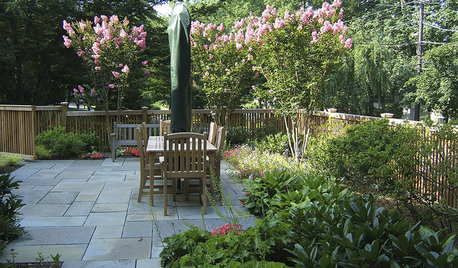
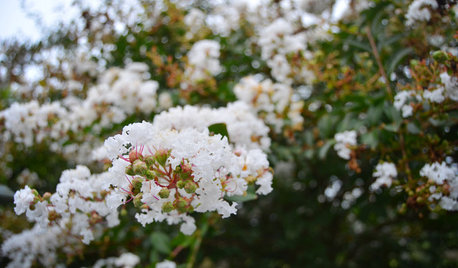
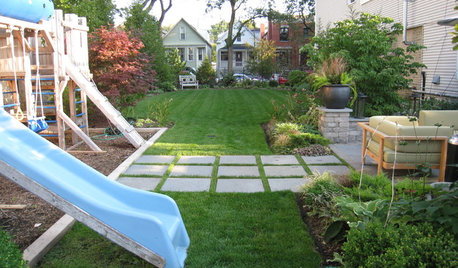
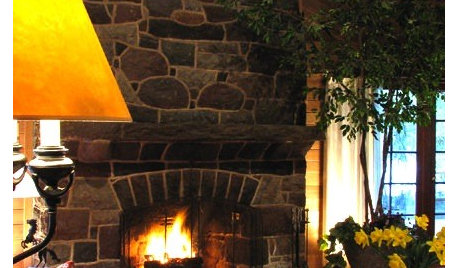
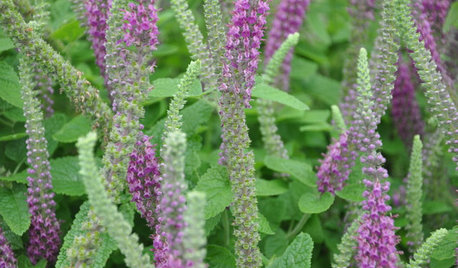

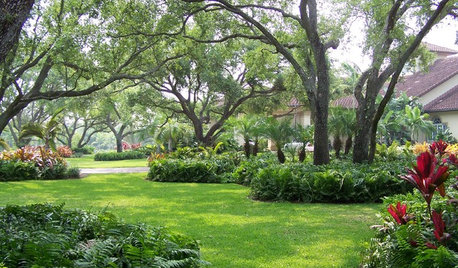









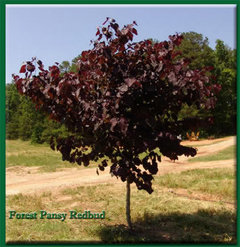
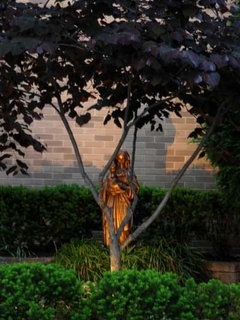
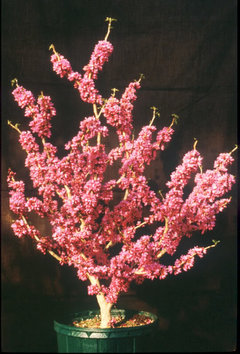
OklaMoni